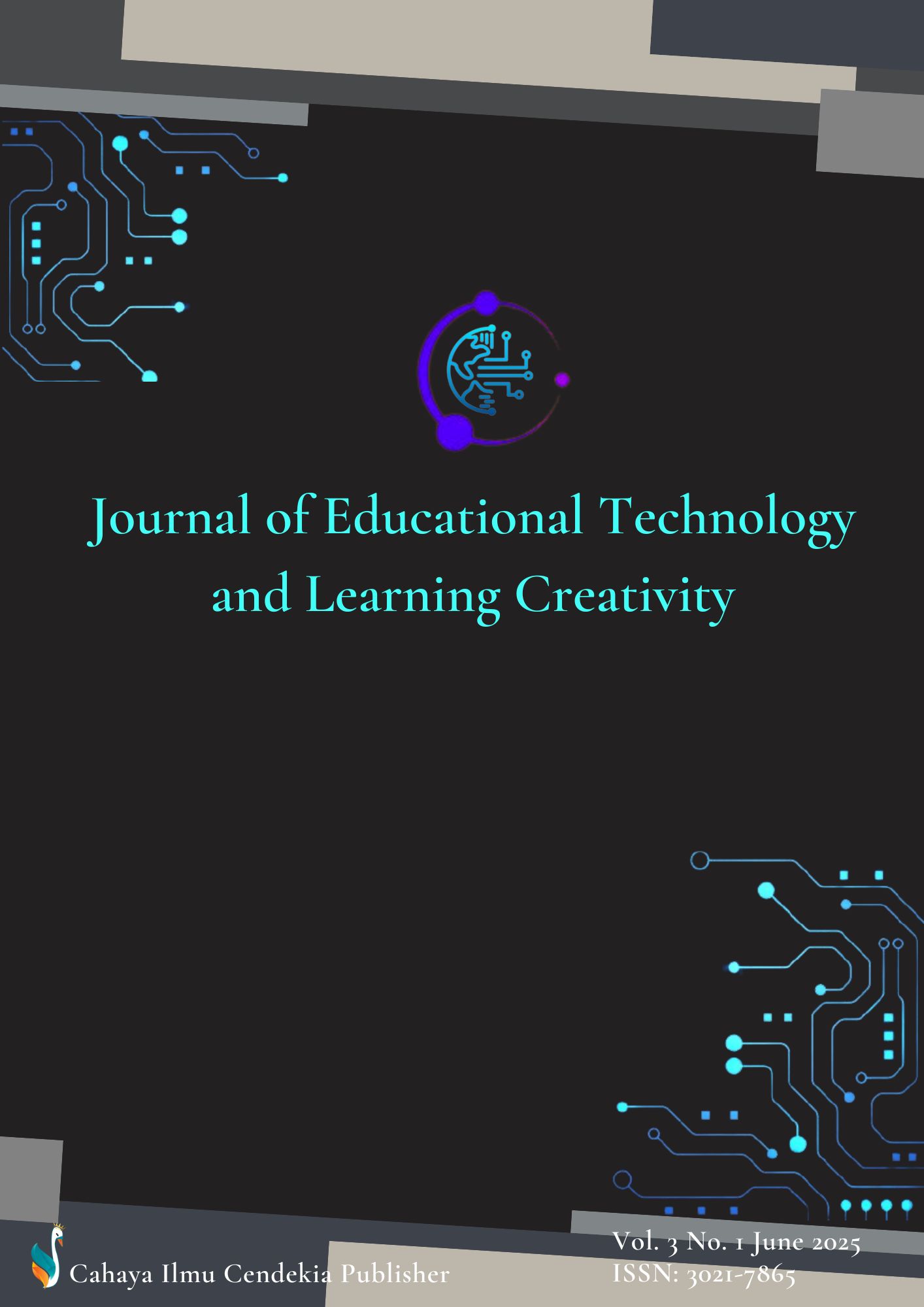New Media and Children's Social Development: A Case Study of Digital Technology Use among 8–12-Year-Olds in Pakistan
Abstract
Purpose of the study: Technological advances have accelerated the pervasive use of new media among children, significantly influencing their social interaction patterns. This study examines the impact of new media usage on the social behaviors of children aged 8–12 years in Pakistan, a developing country context that remains underexplored in the global discourse on digital childhoods.
Methodology: Employing a sequential explanatory mixed-methods approach, 220 children were purposively sampled. Quantitative data were collected using a validated questionnaire and analyzed using SPSS 21, followed by qualitative interviews with selected participants and teachers to enrich the findings.
Main Findings: The results revealed that 59.6% of children demonstrated “good” and 24.5% “very good” new media usage competencies. In terms of social interaction, 64.6% exhibited strong interpersonal skills. Regression analysis indicated that new media usage significantly explained 64.3% of the variance in social interaction patterns (R² = 0.643, p = 0.015). Interviews revealed a nuanced picture: while new media enhanced communication, collaboration, and critical thinking, unsupervised and excessive use was associated with tendencies toward social withdrawal and reduced face-to-face engagement.
Novelty/Originality of this study: This research provides a new socio-cultural perspective by investigating the dual role of new media in a Pakistan context—highlighting how cultural norms mediate children's digital engagement. Unlike previous studies focused on Western societies, this study integrates both child and teacher voices to propose context-sensitive digital literacy programs and emphasizes family-centered supervision strategies.
References
P. Limone and G. A. Toto, “Psychological and emotional effects of digital technology on children in covid‐19 pandemic,” Brain Sci., vol. 11, no. 9, 2021, doi: 10.3390/brainsci11091126.
X. Hu, M. M. Chiu, W. M. V. Leung, and N. Yelland, “Technology integration for young children during COVID-19: Towards future online teaching,” Br. J. Educ. Technol., vol. 52, no. 4, pp. 1513–1537, 2021, doi: 10.1111/bjet.13106.
M. Vedechkina and F. Borgonovi, “A review of evidence on the role of digital technology in shaping attention and cognitive control in children,” Front. Psychol., vol. 12, no. February, pp. 1–22, 2021, doi: 10.3389/fpsyg.2021.611155.
J. Aftab, N. Abid, N. Cucari, and M. Savastano, “Green human resource management and environmental performance: The role of green innovation and environmental strategy in a developing country,” Bus. Strateg. Environ., vol. 32, no. 4, pp. 1782–1798, 2023, doi: 10.1002/bse.3219.
S. K. U. Shah Bukhari, H. Said, R. Gul, and P. M. Ibna Seraj, “Barriers to sustainability at Pakistan public universities and the way forward,” Int. J. Sustain. High. Educ., vol. 23, no. 4, pp. 865–886, 2022, doi: 10.1108/IJSHE-09-2020-0352.
A. Rizwan and F. Mustafa, “Fintech attaining sustainable development: an investor perspective of crowdfunding platforms in a developing country,” Sustain., vol. 14, no. 12, 2022, doi: 10.3390/su14127114.
P. Mizukami, J. Reia, and J. Varon, “Mapping Digital Media,” Russell J. Bertrand Russell Arch., no. 2, p. 20, 2011, [Online]. Available: http://www.soros.org/initiatives/media/articles_publications/publications/mapping-digital-media-morocco-20110617/OSF-Media-Report-Morocco-06-14-2011-final-WEB.pdf
B. Hussain Shah, S. Riaz, and S. Rashid, “Internet users expectations versus reality: a comparative study of South Korean and Pakistani children,” Online Media Soc., vol. 3, no. December, pp. 84–97, 2022, doi: 10.71016/oms/3yz17028.
A. Zulfiqar, N. Saleem, and F. Latif, “Children television viewing patterns and parental media literacy in Pakistan,” Glob. Reg. Rev., vol. IV, no. III, pp. 403–411, 2019, doi: 10.31703/grr.2019(iv-iii).45.
H. Khan, M.-U.- Ghafar, and A. Khan, “Children TV watching habits: a case study of Pakistan,” Glob. Digit. Print Media Rev., vol. V, no. III, pp. 11–22, 2022, doi: 10.31703/gdpmr.2022(v-iii).02.
D. Apdillah, N. Isnaini, L. K. A. Lubis, P. Azura, and Z. A. Siagian, “Misuse of digital technology to the use of telecommunication industry technology devices used by children,” J. Humanit. Soc. Sci. Bus., vol. 1, no. 3, pp. 27–34, 2022, doi: 10.55047/jhssb.v1i3.145.
S. Abbas, R. Jami, L. Iddress, S. Abbas, and K. Bibi, “Media violence and quality of life among young children and youth in Sialkot, Pakistan,” Al-Athfal J. Pendidik. Anak, vol. 7, no. 2, pp. 167–176, 2022, doi: 10.14421/al-athfal.2021.72-07.
G. Safdar, “Digital media use for cultural grooming and learning new cultural trends among young Pakistani women,” Online Media Soc., vol. 4, no. 1, pp. 70–85, 2023.
T. Mö, “Longitudinal Effects of Violent Media Usage on Aggressive Behavior — The Significance of Empathy,” pp. 105–124, 2014, doi: 10.3390/soc4010105.
N. Martins and A. Weaver, “The role of media exposure on relational aggression: A meta-analysis,” Aggress. Violent Behav., vol. 47, pp. 90–99, 2019, doi: 10.1016/j.avb.2019.03.001.
B. Krahé and I. Möller, “Longitudinal effects of media violence on aggression and empathy among German adolescents,” J. Appl. Dev. Psychol., vol. 31, no. 5, pp. 401–409, 2010, doi: https://doi.org/10.1016/j.appdev.2010.07.003.
M. W. M. Al-Quran, “Traditional media versus social media: challenges and opportunities,” Tech. Rom. J. Appl. Sci. Technol., vol. 4, no. 10, pp. 145–160, 2022, doi: 10.47577/technium.v4i10.8012.
M. G. Yoedtadi, A. M. Ronda, and U. Wahid, “Television and social media convergence (convergence continum and journalistic convergence analysis at Indosiar),” Asian Res. J. Arts Soc. Sci., vol. 14, no. 3, pp. 56–72, 2021, doi: 10.9734/arjass/2021/v14i330241.
E. A. Baranova, I. G. Anikeeva, O. V. Shiryaeva, C. G. Caselles, and A. A. Shnaider, “Ethical principles of journalism communication: media convergence as a transforming factor,” Online J. Commun. Media Technol., vol. 12, no. 4, 2022, doi: 10.30935/ojcmt/12746.
X. Li, G. Xiaojing, and R. and Mou, “Pioneering the media convergence: lifestyle media production in the digital age in China,” J. Media Bus. Stud., vol. 18, no. 4, pp. 304–320, Oct. 2021, doi: 10.1080/16522354.2020.1853467.
H. Bender and M. Kanderske, “Co-operative aerial images: A geomedia history of the view from above,” New Media Soc., vol. 24, no. 11, pp. 2468–2492, 2022, doi: 10.1177/14614448221122201.
L. Savolainen and M. Ruckenstein, “Dimensions of autonomy in human–algorithm relations,” New Media Soc., vol. 26, no. 6, pp. 3472–3490, 2024, doi: 10.1177/14614448221100802.
S. Digennaro, “The syndrome of multiple bodies: the transformative impact of the onlife existence on preadolescents,” Front. Educ., vol. 9, no. April, pp. 1–8, 2024, doi: 10.3389/feduc.2024.1362448.
X. Wang, “The motivations and uses of mainstream and social media during the COVID-19 pandemic in China: A structural equation modeling approach,” Comput. Hum. Behav. Reports, vol. 4, p. 100098, 2021, doi: https://doi.org/10.1016/j.chbr.2021.100098.
C. Chen, L. Sangwook, and S. S. Sundar, “Interpassivity instead of interactivity? the uses and gratifications of automated features,” Behav. Inf. Technol., vol. 43, no. 4, pp. 717–735, Mar. 2024, doi: 10.1080/0144929X.2023.2184174.
O. Ojomo and O. A. Sodeinde, “Social media skits: reshaping the entertainment experience of broadcast audience,” SAGE Open, vol. 11, no. 3, 2021, doi: 10.1177/21582440211032176.
P. Van Aelst et al., “Does a crisis change news habits? a comparative study of the effects of covid-19 on news media use in 17 European Countries,” Digit. Journal., vol. 9, no. 9, pp. 1208–1238, Oct. 2021, doi: 10.1080/21670811.2021.1943481.
Y. Theocharis et al., “Does the platform matter? Social media and COVID-19 conspiracy theory beliefs in 17 countries,” New Media Soc., vol. 25, no. 12, pp. 3412–3437, 2023, doi: 10.1177/14614448211045666.
J. B. Kirkbride et al., “The social determinants of mental health and disorder: evidence, prevention and recommendations,” World Psychiatry, vol. 23, no. 1, pp. 58–90, 2024, doi: 10.1002/wps.21160.
B. Lal, Y. K. Dwivedi, and M. Haag, “Working from home during covid-19: doing and managing technology-enabled social interaction with colleagues at a distance,” Inf. Syst. Front., vol. 25, no. 4, pp. 1333–1350, 2023, doi: 10.1007/s10796-021-10182-0.
H. M. Pontes et al., “Measurement and conceptualization of gaming disorder according to the world health organization framework: the development of the gaming disorder test,” Int. J. Ment. Health Addict., vol. 19, no. 2, pp. 508–528, 2021, doi: 10.1007/s11469-019-00088-z.
H. K. Ma, “The moral development of the child: An integrated model,” Front. Public Heal., vol. 1, no. NOV, pp. 1–18, 2013, doi: 10.3389/fpubh.2013.00057.
M. Iqbal, F. Saeed, S. Qassim Bham, M. Athar Khan, and U. H. Ahmed Sharif, “Impact of mobile phone use on health, behavior and social interactions among children aged 2 – 12 years,” Pakistan Biomed. J., no. c, pp. 218–222, 2022, doi: 10.54393/pbmj.v5i7.646.
B. T. Khoa, B. P. Hung, and M. Hejsalem-Brahmi, “Qualitative research in social sciences: data collection, data analysis and report writing,” Int. J. Public Sect. Perform. Manag., vol. 12, no. 12, pp. 187–209, 2023, doi: 10.1504/IJPSPM.2023.132247.
E. Loos and L. Ivan, “Not only people are getting old, the new media are too: Technology generations and the changes in new media use,” New Media Soc., vol. 26, no. 6, pp. 3588–3613, 2024, doi: 10.1177/14614448221101783.
M. Makita, A. Mas-Bleda, E. Stuart, and M. Thelwall, “Ageing, old age and older adults: a social media analysis of dominant topics and discourses,” Ageing Soc., vol. 41, no. 2, pp. 247–272, 2021, doi: 10.1017/S0144686X19001016.
A. Mathrani, T. Sarvesh, and R. Umer, “Digital divide framework: online learning in developing countries during the COVID-19 lockdown,” Glob. Soc. Educ., vol. 20, no. 5, pp. 625–640, 2022, doi: 10.1080/14767724.2021.1981253.
M. Fayez, R. Begum, L. Khan, M. Ahmad, W. Ahmed, and F. Sana, “Bridging the digital divide for diabetes care : affordability and adoptability of health technology in Pakistan,” Discov. Heal. Syst., 2025, doi: 10.1007/s44250-025-00207-9.
B. Jungselius, “A scoping review of current research on social media use among children and adolescents,” Discov. Psychol., vol. 4, no. 1, 2024, doi: 10.1007/s44202-024-00226-2.
D. M. Hilty et al., “A scoping review of social media in child, adolescents and young adults: research findings in depression, anxiety and other clinical challenges,” BJPsych Open, vol. 9, no. 5, pp. 1–12, 2023, doi: 10.1192/bjo.2023.523.
M. P. Paulus, Y. Zhao, M. N. Potenza, R. L. Aupperle, K. S. Bagot, and S. F. Tapert, “Screen media activity in youth: A critical review of mental health and neuroscience findings,” J. Mood Anxiety Disord., vol. 3, p. 100018, 2023, doi: https://doi.org/10.1016/j.xjmad.2023.100018.
Nazmine, A. Khalid, K. Z. Chishti, and H. K. Tareen, “New media technologies and society: a study on the impact of new media technology on interaction patterns of youth,” no. May, pp. 66–77, 2021, [Online]. Available: https://www.researchgate.net/publication/351955632
X. Zhang, M. Usman, A. ur R. Irshad, M. Rashid, and A. Khattak, “Investigating spatial effects through machine learning and leveraging explainable AI for child malnutrition in Pakistan,” ISPRS Int. J. Geo-Information, vol. 13, no. 9, 2024, doi: 10.3390/ijgi13090330.
A. A. Shah, A. Ullah, G. T. Mudimu, N. A. Khan, A. Khan, and C. Xu, “Reconnoitering NGOs strategies to strengthen disaster risk communication (DRC) in Pakistan: a conventional content analysis approach,” Heliyon, vol. 9, no. 7, p. e17928, 2023, doi: 10.1016/j.heliyon.2023.e17928.
F. E. L. Pérez, J. M. C. Montero, L. V. Meléndez, and E. R. Navarro, “Development of social skills of high school students on virtual platforms, 2021,” World J. Educ. Technol., vol. 14, no. 1, pp. 231–242, 2022, doi: 10.18844/wjet.v14i1.6720 Received.
L. Disney and G. Geng, “Investigating young children’s social interactions during digital play,” Early Child. Educ. J., vol. 50, no. 8, pp. 1449–1459, 2022, doi: 10.1007/s10643-021-01275-1.
A. S. Konca and F. Tantekin Erden, “Young children’s social interactions with parents during digital activities at home,” Child Indic. Res., vol. 14, no. 4, pp. 1365–1385, 2021, doi: 10.1007/s12187-020-09800-1.
S. J. Mathers et al., “Features of digital media which influence social interactions between adults and children aged 2–7 years during joint media engagement: A multi-level meta-analysis,” Educ. Res. Rev., vol. 46, p. 100665, 2025, doi: https://doi.org/10.1016/j.edurev.2025.100665.
K. Hirsh-Pasek, J. M. Zosh, B. Hassinger-Das, R. M. Golinkoff, Y. T. Uhls, and L. Guernsey, “Putting Digital Media in Balance: The Importance of Human-to-Human Interaction for Young Children BT - Handbook of Children and Screens: Digital Media, Development, and Well-Being from Birth Through Adolescence,” D. A. Christakis and L. Hale, Eds., Cham: Springer Nature Switzerland, 2025, pp. 387–393. doi: 10.1007/978-3-031-69362-5_53.
A. Nolan and D. Moore, “Broadening the notion of peer-to-peer interactions when young children engage with digital technology,” Early Child. Educ. J., vol. 53, no. 5, pp. 1341–1353, 2025, doi: 10.1007/s10643-024-01662-4.
Copyright (c) 2025 Sadar Zubair, Eyas Aref Alyousfi, Sajid Ali Khan

This work is licensed under a Creative Commons Attribution 4.0 International License.
Authors who publish with this journal agree to the following terms:
- Authors retain copyright and acknowledge that the Journal of Educational Technology and Learning Creativity is the first publisher licensed under a Creative Commons Attribution 4.0 International License.
- Authors are able to enter into separate, additional contractual arrangements for the non-exclusive distribution of the journal's published version of the work (e.g., post it to an institutional repository or publish it in a book), with an acknowledgment of its initial publication in this journal.
- Authors are permitted and encouraged to post their work online (e.g., in institutional repositories or on their website) prior to and during the submission process, as it can lead to productive exchanges and earlier and greater citation of published work.


.png)


.png)
.png)
.png)












